Viceroy (Limenitis archippus)
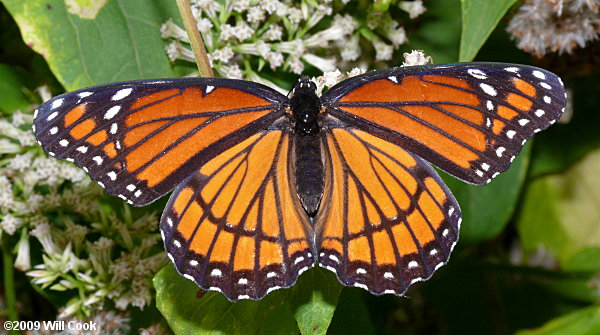
| Viceroy is a large, bright orange butterfly with black lines and white spots on the wings. Viceroy mimics the poisonous Monarch (Danaus plexippus). This is a classic example of Batesian mimicry, where a palatable species evolves to look like a poisonous one. Jordan Lake, Chatham Co., NC 9/19/09. |
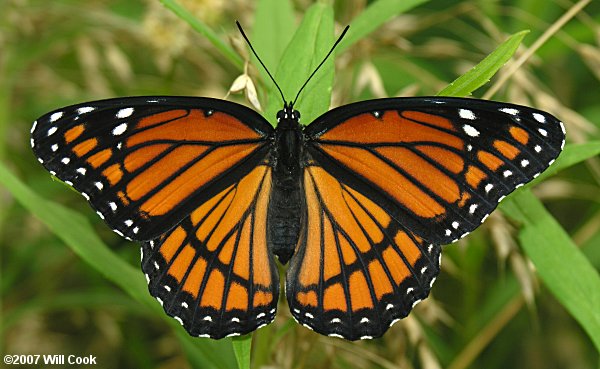
| Viceroy is fairly common in North Carolina, found most often in wet habitats where willows (their host plants) grow. A fresh individual. Durham Co., NC 6/24/07. |
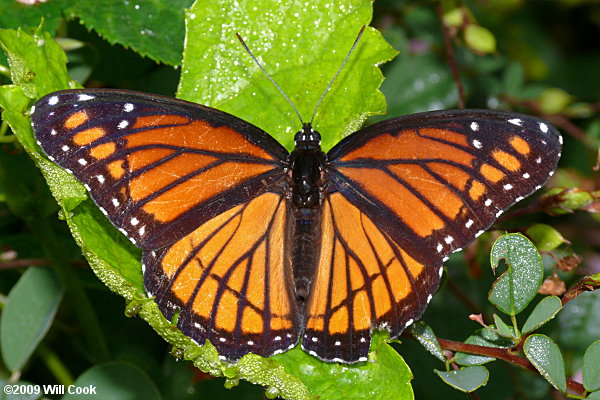
| Moderate wear, with a few scratches and a couple of chunks missing from the hindwing. Durham Co., NC 8/16/09. |
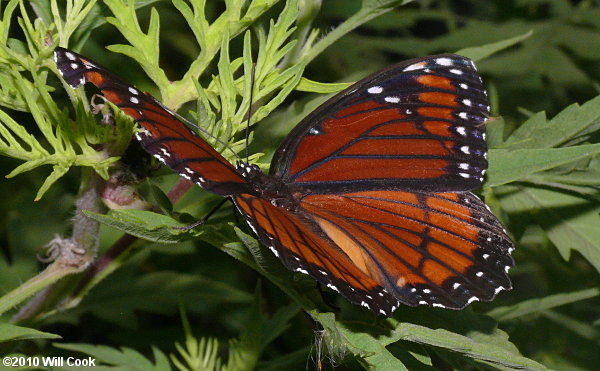
| Viceroys further south are browner, resembling the Queen butterfly, which is more common than the Monarch here, but equally toxic. Okeechobee, Okeechobee Co., FL 6/30/2010. |
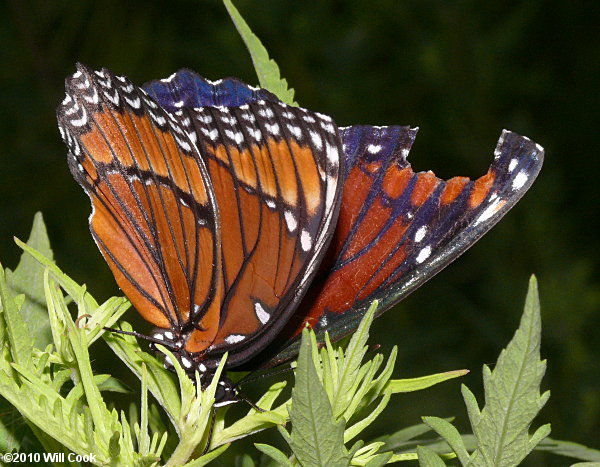
| Okeechobee, Okeechobee Co., FL 6/30/2010. |
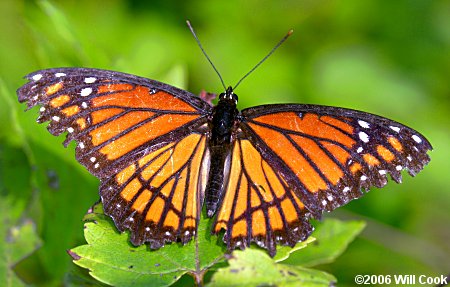
| This one is a bit more worn. Durham Co., NC 9/9/06. |
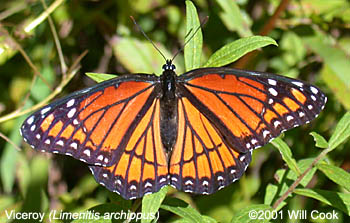
| When perched, Viceroy can be told from Monarch by the black line across the hindwings. They can be told apart in flight, too -- the Viceroy is smaller, flies with flat wings (Monarch usually flies with its wings in a V-shape), and flies more erratically. Durham Co., NC 9/16/2001. |
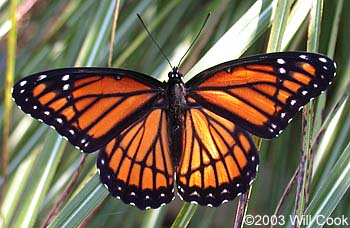
| Viceroy's sibling species, the Red-spotted Purple (Limenitis arthemis astyanax), is another example of Batesian mimicry but looks quite different -- it evolved to mimic the dark swallowtails, some of which are unpalatable. Durham Co., NC 9/19/03. |
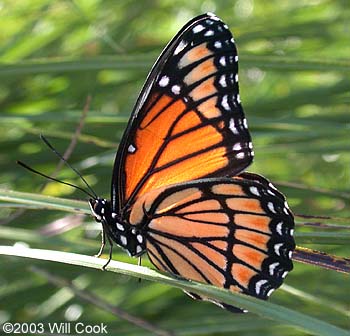
|
Same individual. Durham Co., NC 9/19/03. |